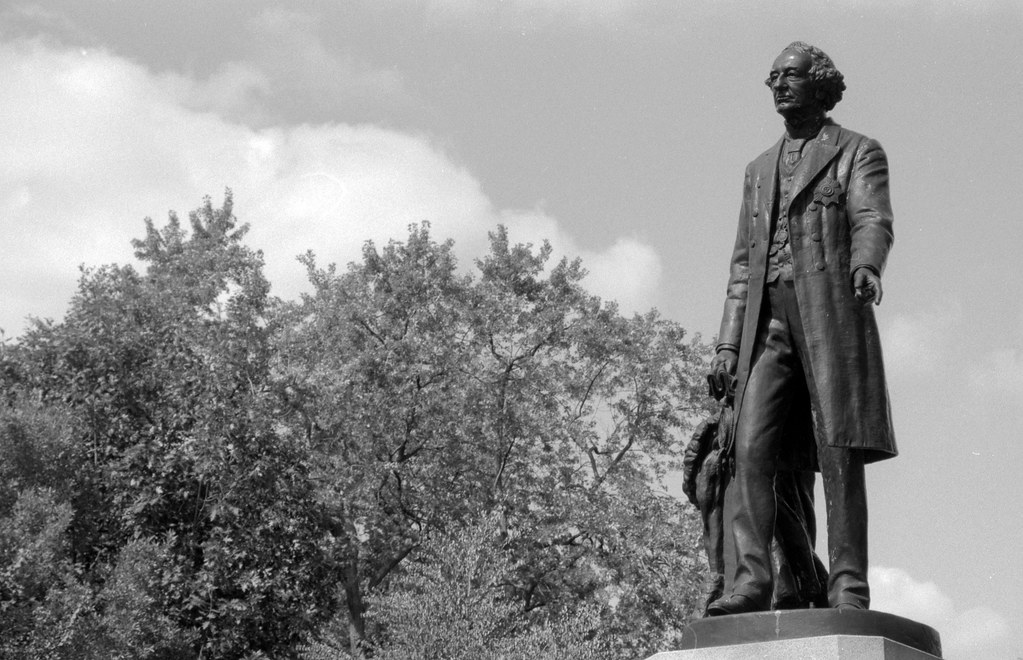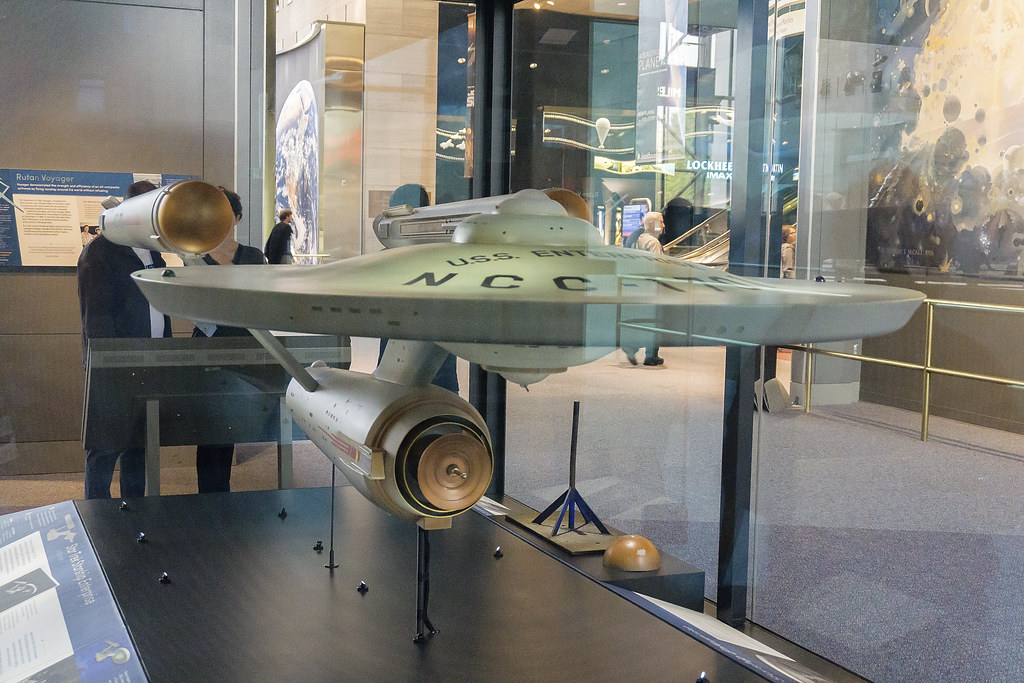Here we are, there is always a certain bittersweetness about completing a project. And for me, this one was an eye-opener. It challenged not only my world view but my view of my own country and our history. But that is what history is supposed to do, challenge us to learn from the past and see how we can change the future. And here is the trouble with history, we can only see it through the eyes of those who wrote it and our personal bias. And trust me, it is hard to overcome your own bias. But the biggest problem with history that is compounded by both is that we weren’t there.

Nikon F90 – AF Nikkor 28-105mm 1:3.5-4.5D – Kodak TMax 100 @ ASA-100 – Kodak HC-110 Dil. B 6:00 @ 20C
All Canadians have a strange relationship with our history. We are both proud and ashamed, embrace, embellish, and sweep under the rug. But the worst part is how we put our historical figures on pillars, turn them into heroes. And we’ve always done it, from giving Sir Isaac Brock the moniker of “Saviour of Upper Canada” and weiving the tale of Laura Secord. And yet when we learn of some misstep that doesn’t jive with the current reality, we’re more likely to wipe their name and tear down their image in the hope that it will wipe the shame. We see our historical figures as superhuman, incapable of doing something wrong. We forget they’re human, subject to the same whim and wishes as we are in the here and now. To put it another way, we’re the crew of the USS Enterprise who in the movie Star Trek First Contact who meet their hero and historical figure, Zephram Cochrane, who does not live up to what they thought he was, how he was presented in their historical texts. And while Cochrane is a fictional character and did not sign the law that committed thousands if not more to the horrors, the parallel remains.

Sony a6000 – Sony E PZ 16-50mm 1:3.5-5.6 OSS
We need to take a more nuanced look at our historical figures. Every one of them has their flaws, some great, some small. Recently a lot about Sir John A. MacDonald has come out, he drank heavily, and it cost him dearly in many cases. He was both bigoted and racist in his policies and actions during his time as Prime Minister. But if it weren’t for him, Canada as it exists today, would not be the same. But there are more figures which are seen as great in Canada. Robert Baldwin quit more than he succeeded, especially when times and situations got tough. Yet, his persistence helped build Canadian Democracy and ensure that Responsible Government would remain in Canada. His partner Louis La Fontaine is a real piece of work, he was the right-hand man at one point to Papineau, a rebel, and himself labelled a traitor and spent time in prison. Yet he along with Baldwin realised that the greater future lay in responsible government and much of his work afterwards helped bring Canada East (Quebec) into modern society. William Lyon MacKenzie was a traitor in the highest order; he attempted an overthrow of the lawful government. MacKenzie even had a price on his head and then tried endlessly to get Canada annexed by the United States and generally was, if you pardon my language, an asshole. Yet, he helped with turning muddy York into a City. He also ensured that mayors were elected in open elections by the municipal elections rather than in a closed council session. A privilege I exercise to try and get Milton’s Mayor out of office. George Brown hated both the French and the Roman Catholics, and he also ensured that through proportional representation makes the western provinces (yes, you Saskatchewan and Alberta) dislike us in Ontario and Quebec because we decide elections on the Federal level. Yet, he would be a key to getting the whole Confederation thing together. The list continues, Thomas D’Arcy McGee, was an Irish nationalist and a traitor to the British Government. Yet he ensured that many signed onto the idea of Confederation and he paid for his life. Sir John Graves Simcoe is held up as an abolitionist, but his actions did not free his slaves or the slaves of his friends. George Cartier was also an active traitor in the Lower Canada Rebellion yet helped bring the French-Canadians into Confederation.

Sony a6000 – Sony E PZ 16-50mm 1:3.5-5.6 OSS
But where does that leave us today? Today we live in a world of extremes, where if you have an opinion, you must be outraged. Where the Internet is a place of hatred and ire and more, don’t get me wrong; I’m not defending what our historical figures did, each one has their sins. But don’t we all? Aren’t we all not exactly the best? Could we? Can we be better? Yes, but can they? Of course not, they’re all dead. They didn’t share our same morals and world view. They were working with what they saw as best. And you know, in the long run, they failed. But in 150 years, will we be seen any better? More importantly, will we care? Probably not, in 150 years, I hope to be enjoying a good dirt nap. But what do we do now? Do we tear down statues, remove names, and change things? That answer is far more complicated because the answer is both yes and no. It all depends on one thing, context.

Nikon F5 – AF Nikkor 35mm 1:2D – Kodak Tri-X 400 @ ASA-400 – Kodak D-76 (1+1) 9:45 @ 20C
What’s the context, every time I ask the question or dig deeper, people cringe. When it comes to why something is put up or named after a person, you need to look at why it was done as such. That question has been asked a lot on the United States as Statues of Confederate Generals are being torn down. See, most of those were raised not to remember the sacrifice of the soldiers who died, but to remind Black Americans where their place was during the age of Jim Crow laws. Should those statues be torn down? Yes. But Canada is far more nuanced. We may not have the best relationship with those of colour and our indigenous population, so we need to take a closer look at where and why certain statues and names are presented. You got it, context. In Canada, most statues to Sir John A. MacDonald along with prizes and buildings are raised to celebrate him in his role within Confederation. I wouldn’t put a building on a reserve or related to the Truth & Reconciliation Committee or a Government building on a reserve named after Sir John A. It might not also be a smart move to name a government building after George Brown in Quebec or put the British embassy in the Thomas D’Arcy McGee building. Yet, we feel the only way to move past the sins of the past is to erase the face and name of those who have been shouldered with the blame. It’s outrage gone wild.

Mamiya m645 – Mamiya-Sekor C 45mm 1:2.8 N – Ilford HP5+ @ ASA-200 – Pyrocat-HD (1+1+100) 9:00 @ 20C
But we cannot ignore the past either if we erase it, we forget. And Canadians are pleased to erase and forget, seeing that as the only act of redemption needed to quell the rising outrage. Does that work? Does that help? The simple answer is no. It’s time that we all start to take a more nuanced look at history, take both the good and the bad. Celebrate the good, be proud of it, by all means. And trust me, Canada has done a lot of good. But we’ve also done a lot of evil, and it’s important to remember and atone for that. Not through whitewashing, but learning and changing. We cannot change the past, we cannot change how the father’s of Confederation put the country together back then, but we can lobby for change now! Remember the responsible government? It’s where the leaders of our country are accountable to us, the voters. Sadly these days it seems party loyalty is more important than loyalty to those who control who sits in that chair as their representative. And while past attempts to change the Consitution has failed, miserably, maybe it’s time to start moving towards a change. And this time do it right, bring in the minorities, the women, the Indigenous. And always remember, meaningful change is slow, measured, restrained, and most important, takes time. We stand today somewhat divided (but probably not as divided and some would want us to believe), east against west, French against English, Indigenous against the settlers. And the list can go on, yet we forget that Canada did great things when they came together. We did it then; we can do it again. And that my dear readers is all I’m going to say on the political front because this post has already gone on far too long.

As a project, I set myself up several goals to move it along in a logical manner. And while I didn’t achieve every goal towards that end, I did stick to my plan. The photos were created and were, for the most part, shot on the same film stock and camera. I did have to diverge and switch to Ilford HP5+ as the weather turned near the end. And I did go out after the fact with a 4×5 camera and some Tri-X. But I did, for the most part, stick to the Mamyia m645 for the creation of the images. And I did all the blog posts done before the end of the project and kept to the posting schedule. I’m writing this post in the second week of January. And I did get far more political than I expected, and I’m sure a few people stopped reading as I started to discuss in great deals my view. And while I did have to dip into the wonderful world of Public Domain images for several posts, because honestly, it’s hard to photograph an idea. Plus out of this project, I got the idea for two more projects (short-run) that I hope to complete later this year. One about the Welland Canal (all four) and a more in-depth look at Ontario’s railroads. Thankfully both of those are about things and easily photographed. So now dear readers, I leave you, hopefully having learned something, maybe a little challenged, and might even be inspired to think a little bit more before voting in the next election.